Review of Angel Guts
Introduction
It`s been well over a week since I finished wading through this set of 5 movies and the accompanying audio commentaries and Director interviews. The truth is that I felt I needed time to let the impact sink in order to write about my opinions of each. Normally this is no problem. I`ve always been an opinionated b*****d. But the plain truth is that these films were filled with so much in the way of contradiction that no firm opinion held. And over a week later I feel pretty much the same way.
The Angel Guts series comprises five movies which were based on the 1970`s Japanese manga by Ishii Takashi.
Takashi`s work played pretty much like movie storyboards and the story goes that it was his frustration at being unable to break into movies that drove him to pen and ink the manga series `Tenshi no Harawata` (Angel Guts). Each of the five films is directed by a different Director (no big plan - just how it happened) with the final instalment Directed by Takashi himself. They are loosely connected in that each of the five involves the rape of a young lady named Nami. The title of the series, `Angel Guts`, refers to the courage that helps the varying victims throughout the series get through the horrendous violations against them.
These films (despite being produced in the late 1970`s/early 1980`s) are ultra-violent, and it`s easy to see how they may well have been trailblazers for much extreme Japanese cinema today. They also deal with their subject matter in ways that, in truth, would be entirely unacceptable to modern day western audiences - and this is where the difficulty in viewing lies. Whilst the full brutality of rape is reflected accurately perhaps (without ever resorting to explicit detail), there is still an unpalatable feeling throughout that there is a voyeuristic and sexually gratuitous element to filming - where the camera perhaps lingers longer than it needs to. This left me with the queasy/grubby feeling that I was somehow participating in these horrific and exploitative acts. However, I am no fan of censorship - and for fear of coming across `Mary Whitehouse-like`, I`ll try to give as an objective view as I can.
So here`s the low-down.
HIGH SCHOOL CO-ED
This film kicks off with a violent act of rape by three crazed bikers - and it`s, frankly, difficult viewing. The main character is Kawashima Tetsuro, a crazed late-teens biker who, along with his cohorts Kajima and Sadakuni, strikes terror into the local population.
The initial opening of the movie shows the total disregard for the feelings of their victims that the three have, as well as building up a picture of the three. (We learn, for example that the psycho of the gang, Sadakuni, compensates for his sexual inadequacies by carrying a large knife).
The initial rape scene seems relentless and lasts for some time - and there`s even a sneaking suspicion introduced that perhaps the victim is enjoying it after all which, given the ferocity and violence of the attack, is really an unforgivable suggestion. This is really the problem throughout, though is culturally not uncommon in Japanese movies of the era.
Things get a little more emotionally complex when we learn that Tetsuro does have some feeling after all. He acts as a father (we never know why) to his schoolgirl sister, Megu. It`s his love for his sister that suddenly brings him to his senses when the gang attack another young schoolgirl (yes - nothing is sacred here), called Nami. Tetsuro intervenes and fights off the others in his own gang. From that point on, things get more complex as the gang begin to fall apart.
Tetsuro is forced to apologize to Kajima who demands that Tetsuro rapes Nami in front of the other two. Amazingly Tetsuro agrees, but this sets up a series of contradictions within himself and the group. The group finally implode when Kajima attacks Megu, Tetsuro`s sister. The closing scenes are bizarre though as the violence that has brewed up between the gang members is played out with Tetsuro battling with a gangster that he picks a fight with in a nightclub.
It`s not a movie that I would watch again any time soon.
ANGEL GUTS: RED CLASSROOM
The second movie in the set, `Angel Guts: Red Classroom` is also directed by Sone Chusei.
This has a murky David-Lynch like air from the outset. Unlike others in the series, this seems to dig a little deeper into the dark-psyche of violent sexuality - or at least attempts to do so.
The movie kicks off with principal character Muraki Testuo watching a homemade blue movie in a darkened room with a dozen other men. It`s an unpalatable film depicting a school being attacked and raped in a school by three youths. Muraki becomes obsessed by the girl`s expression throughout, both frightened but dignified, an expression of grim resignation to her fate.
Murakami himself is a pornographer (giving Director Chusei the perfect excuse for some fairly explicit and voyeuristic photographic sessions) and takes it upon himself to track down the schoolgirl victim, who, as it turns out, is now a woman in her own right.
In some distasteful twist, he discovers that she immediately assumes that, when he mentions having seen the film, that he wants her to engage in further acts of depravity, and despite a cold exterior she seems willing to participate.
She tells Muraki that countless men have recognized her from the movie (where the rape depicted was real) and that she had been willing to do anything to get the men to forget her and leave her in peace, succumbing to whatever obsessive desires were haunting them.
Muraki`s intentions are relatively harmless though, and she attaches to him a glimmer of hope and trust, though he is delayed (by the police) in meeting her as planned the following evening and it`s a further three years till he meets her again.
This time Nami has thrown in her lot with the lowest and most depraved of men, offering herself to groups of salivating men at a time in damp back-lot sheds.
The close of the film is extremely dark and depressing and there is a disturbing twist at the end that my upset some viewers. Despite the fact that the only act of rape in this movie is that depicted at the outset, there is nothing comforting about the consensual sex that follows. This remains a film about the degrading exploitation of women and the far-reaching psychological effects thereafter.
NAMI
Director Tanaka`s film is perhaps the most curious of all. In this, Nami is a successful magazine reporter searching for victims of rape and trying to get a universal insight into their feelings and the effect that it`s had upon them. Apart from the obvious notion that investigative journalism is, in it`s own right, a form of `rape` (she pursues the victims and forces them to tell their tales), this movie is a mixed bag of messages - though no less thought-provoking for that.
There`s also more than a hint that the stories she uncovers unlock a dark sexual desire of her own and we see scene after scene of Nami satisfying these desires - with and without help from others!
Eventually she is faced with a rape victim who has literally been driven mad and has gone berserk in a local hospital. She is forced (by the victim) to face up to the true brutal realities of violent rape and realises that her fantasies have no connection with the brutal and cruel realities of rape.
It`s a really very stark wake-up call to any viewers who may also have been idealising and fantasising about rape in a de-humanised way. In short - this might deliver a moral shock wave to the very people who are drawn to such material in the first place! In this respect, this is possibly the most effective film of the set.
ANGEL GUTS: RED PORNO
This is perhaps the most obviously and unapologetically pornographic movie of the set.
This sees Nami agreeing to stand in for a friend on a porno-shoot for a magazine called (you got it) `Red Porno` which specialises in degrading bondage and (near) rape style shots. Nami is naturally frightened out of her wits, but coming out of the experience alive she feels that no real harm has been done. That is, until she appears on the cover of the magazine - which makes her the focus of attention for a series of perverts and stalkers who believe that her willingness to be photographed is tantamount to an open invite for abuse.
One particularly obsessive stalker tracks her down and their involvement with each other is a mutually hopeless one, sending both into a downward spiral of hopelessness. Again, despite this film providing ample titillation for those with an interest in violent and abusive sexuality, it also provides a stark moral warning. Talk about momentous hypocrisy!
ANGEL GUTS: RED VERTIGO
This, the final movie on the set, is the first movie ever directed by Takashi Ishii, who created the Angel Guts series as a manga and wrote all of the screenplays.
As a very young nurse, Nami is attacked and raped by two slightly demented patients. She then returns home to find her fiancé with another woman
In the meantime, a lonely, drunk Muraki (played by Takashi Miike regular Naoto Takenaka - Ley Lines, Young Thugs: Nostalgia et al) has daydreams about a barmaid, despite the fact that he is in big trouble in his personal life.
As he tries to leave town, he hits Nami with his car as she leaves her apartment. (Man - she`s having a bad day!) He thinks he`s killed her so he drags the `corpse` into his car. When he realises that she`s breathing but unconscious, he decides to try and remove her clothing. She wakes up though and tries to run away. Strangely, after a cat and mouse chase, and a half-rape (he can`t perform) they somehow develop a reciprocal relationship. This culminates in some of the longest and more explicit sex scenes in any of the movies (the pixelated nether-regions give the game away, appearing as they do for the first time).
It`s difficult to rationalise the movie, but maybe its message is that sex is not enough. For a relationship to work (even between desperate characters in desperate situations) there needs to be some good communication. On the other hand, this could be just classic Japanese low-budget Roman-porno that didn`t really need any elevated messaging to find an audience. Sadly, that may well have been the case.
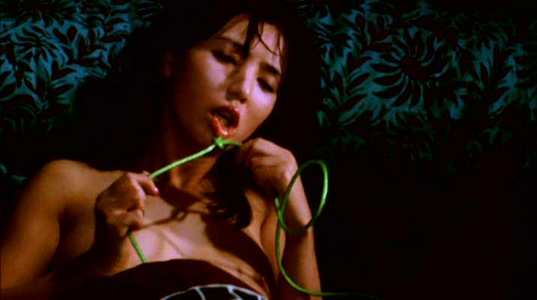
Video
The picture quality is variable, with High School Co-ed looking like the oldest movie of the bunch with noticeable signs of wear, principally through the title sequence. Overall though, the quality of the cinematography, print and transfer is very acceptable despite limited budgets throughout every part of the production cycle.
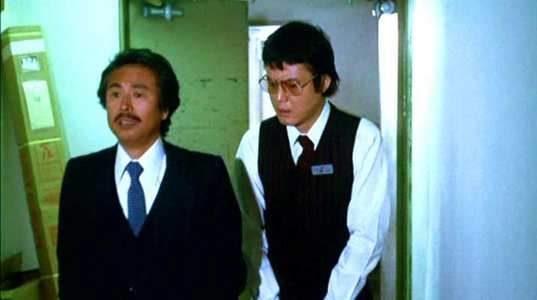
Audio
Perfectly acceptable original Dolby Digital Mono or Dolby Digital 5.1 which reveals that a little recent work has really added to the impact of these otherwise `toppy` soundtracks. In truth, the audio was generally low during my playback (this wasn`t comfortable family viewing) and I relied very heavily on the subtitles for dialogue.
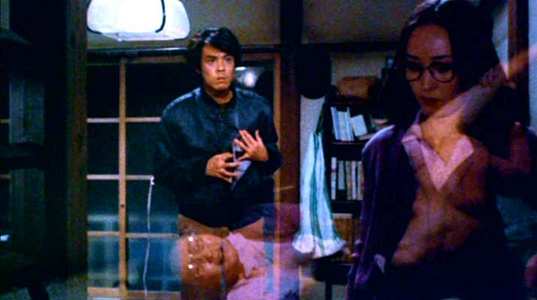
Features
Each disc has some reasonable extras:
- Original Japanese release individual movie video packaging sleeve-art (with rollover translations) which are vaguely amusing. (Eg. The description of `High School Co-ed` is translated as: `Shocking rape and hideous violence! A dry portrayal of the feckless lives of young thugs…`.
- Interviews with the Director of each movie - generally lo-fi home movie style stuff with a single locked off camera. They`re a little hard work (you need the subtitles unless you speak Japanese) and highly non-animated, though do reveal a little about the filmmaking process at Nikatsu Studios. In common with British studios of the late 1970`s, the only movies that seemed to make money were lo-budget soft-core skin flicks, or at least a nod towards the genre. The interview with the Director of RED VERTIGO and originator of the original `Angel Guts` manga (Ishii) is fairly revealing in this respect: "The budget I had was even less than the average Roman-porno film. I recall I completed the film within 5 days without sleeping properly at night." Viewed in this context, what was technically achieved in a very limited time with a tiny budget has to be admired.
- Audio Commentary - each film has a commentary by Japanese movie aficionado Jasper Sharp. Whilst a little dry and academic (feels like you`re back at film school) they are rather informative and somehow side step the moral issues of what is and what isn`t acceptable in cinema.
- Biographies and Filmographies - text based information for those with a thirst for detail.
- Original Trailers - these are really curious as. In general, they reveal very little about the films they represent. Worth a look.
- Other - various interview features. For example, on `High School Co-ed` there`s a 20-minute feature on `Angel Guts` manga originator Takashi Ishii, though it`s a torturous amount of time before you actually see any samples of his artwork! There`s also a feature on the screenplay writer, Toshiharu Ikeda who talks about influences that include John Ford and Hitchcock. He reminds us of the prolific output of the studio, with two movies being shot every month with no more than 2-3 weeks allocated for post-production. By today`s standards it seems an almost unthinkable timetable, though it`s against this work ethic that seemingly prolific Japanese director`s today (like Takashi Miike) measure their own work output.
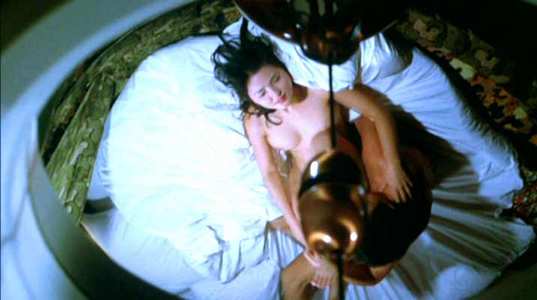
Conclusion
Viewers of the `Angel Guts` series of 5 movies, based on the controversial manga of the same name, will immediately recognise the early origins of an extreme cinematic style (peppered with explicit violence and dehumanised brutality) that is relatively common to some Japanese cinema today.
Despite being produced from as early as 1978, these films must have been a great inspiration to directors like Takashi Miike .
The problem I had with these movies was that whilst they dealt with difficult issues (like rape) from a moralistic point of view (I think we`re on the right side of evil here - just!), they also offer a certain sadistically voyeuristic insight into the abuse too. This made me feel positively queasy - and clouded my ability to rationalise what, in many other respects, is some fine film-making, especially when you consider the limited budgets and time at the Director`s disposal.
I really wouldn`t recommend these to anyone other than those with an almost academic interest in the roots of contemporary Japanese cinematic violence.
As Jasper Sharp, a renowned Japanese cinema critic points out; there is no way that these films would be allowed to be made now. And without wanting to sound like Mary Whitehouse, it`s probably just as well.
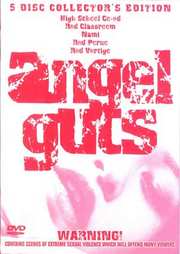
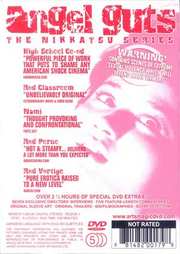














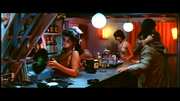




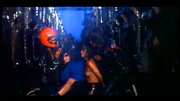


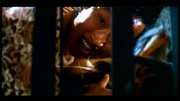


































Your Opinions and Comments
Be the first to post a comment!